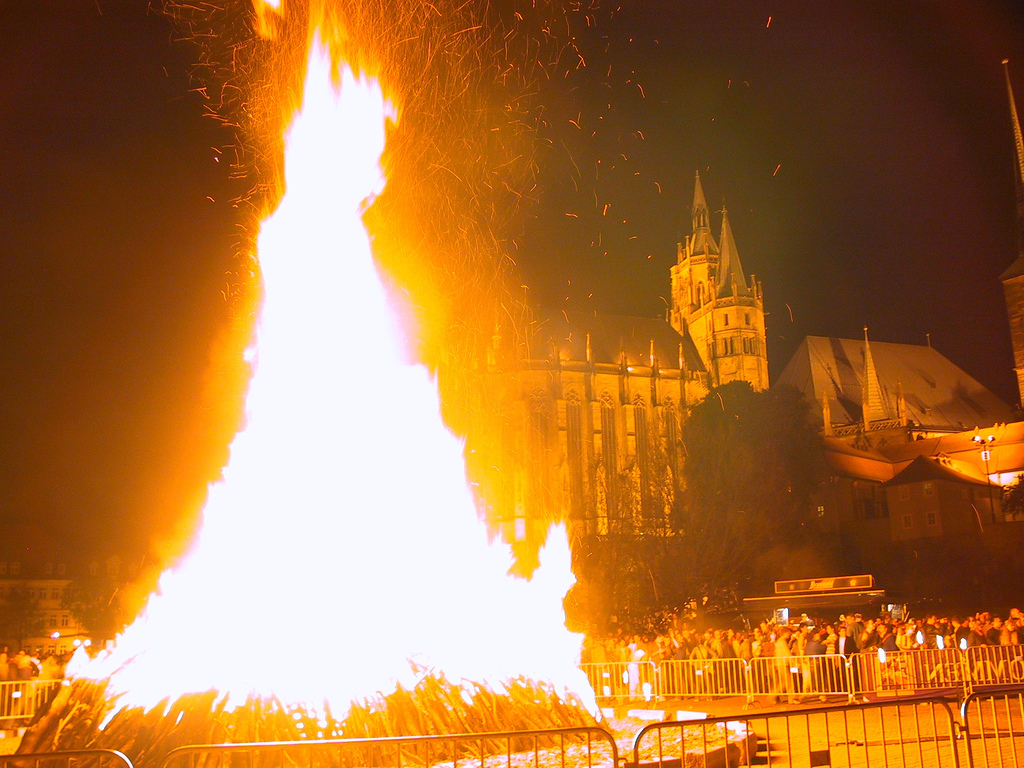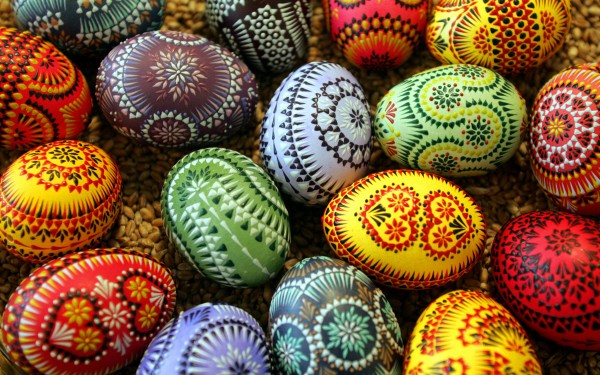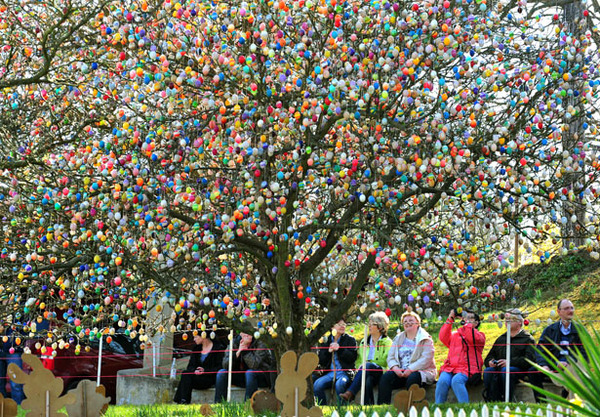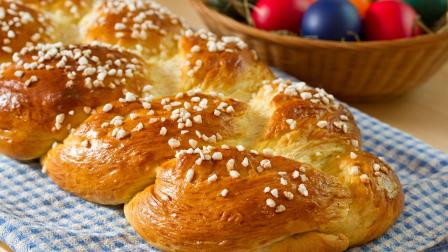EASTER IN GERMANY
Traditions
The German term denoting the Easter is Eostre, which derives from the name of the ancient Germanic goddess of spring. Easter in Germany has maintained a strong pagan character, celebrations of the arrival of spring and renewal of nature. During this time you decorate the houses: the Windows are decorated with drawings of bunnies, eggs and other reasons; in the vessels themselves some branches which are then decorated.
Easter Sunday is the day when children go in search of eggs, previously hidden by parents in the garden or in the House. For children Easter symbol is represented by a Bunny called Osterhase.
Other typical German tradition are the Easter fires, whose tradition still lives especially in Northern Germany. The fires have to be lit by natural means, i.e. with the silica or rubbing two pieces of wood, or with a large lens. Sometimes churches are lights switched off and then switched on again with the flame of this sacred fire.
To symbolise the end of winter and the arrival of spring, the countryside-especially in Northern Germany-peasants make fires to burn all the dried branches which are attributed, in fact, water and fire to purify, to promote the fertility of fields and thwart the evil. The ashes, then, are scattered throughout the fields to propitiate the good harvest.

Easter activities in Germany
Eggs are a symbol of fertility and rebirth and always a symbol of Easter. Their decoration dates back to distant times and over the centuries has become an art form. The most traditional decorations are geometrical and symmetrical, sunbeams and serrations (called in German "Wolf teeth", which would serve to protect from negative events). Among the most commonly used systems are the wax batik, corrosion and engraving with which you create small wonders. You can learn decorative techniques in Sorbian culture information Centre or in the Sorbian Museum and maybe, in the future, show off their skills leaving astonished family and friends. But wonderful decorated eggs you can also buy on the occasion of the Easter market which takes place five weeks before Easter, Saturday afternoons.

Easter water
At the first light of dawn unmarried girls dressed in traditional costume go to a river current, which must flow from East to West, or a source for that would draw water dispenser of beauty, strength and protect from diseases. But only on condition that the girls don't proferiscano word along the way of return. Easier said than done, given that along the way the guys try in every way to make them talk. This custom was introduced a few years ago in Kirchspiel and Schleife, Halbendorf bei Weisswasser and since then is very popular and especially loved.
The egg race
The first mention of this manifestation dates back to 1830, although there are indications that this custom was practiced even earlier on the hills above the river Spree. Affluent citizens went on top of the Hill and were rolling downstream hard-boiled eggs, apples, nuts and sweets, and children between laughter and cries of joy and fun trying to pick them up. Suspended in periods when food was scarce, the tradition has been revived after gaining increasing popularity, became a veritable feast accompanied by a marketplace.

Traditional Easter foods
Passover begins on Holy Thursday (Gründonnerstag), the day they wont Cook the soup at seven herbs, a soup of various vegetables such as spinach, parsley, leeks and chives. On good Friday, we find ourselves in the family and eat a fish dish. Finally, on Easter Sunday, we eat the traditional lamb leg and ends lunch with the typical Easter cake, the brioche, a Hefezopf intertwined.

LINK:http://www.timeanddate.com/holidays/germany/easter
http://gogermany.about.com/od/eventsandfestivals/a/easteringermany.htm